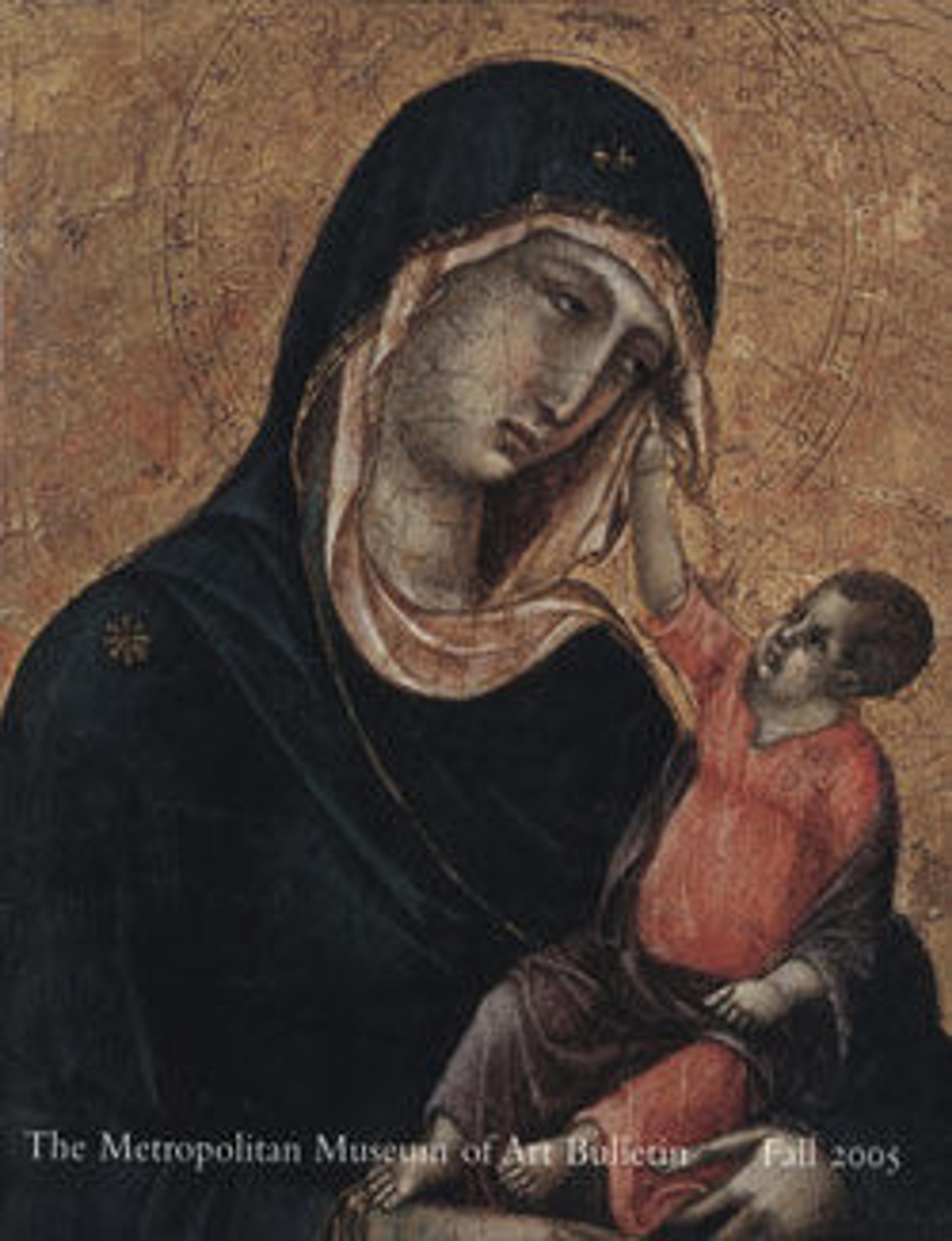One Hundred Chinese Boys
A sumptuous estate, including a bridge and pavilion over a lake, is set off by a shimmering gilded background and golden clouds and enlivened by cavorting children. The conventional motif of One Hundred Children has obvious auspicious connotations in the Chinese tradition. Here, the ancient subject is combined with the moralizing theme of the Four Gentlemanly Accomplishments (calligraphy, painting, music, and the game of go), which engage the children. One Hundred Children became one of the most popular themes among the Kano painters, the official artists who worked for the shoguns and their vassals during the Edo period. The anonymous painter of this screen seems to have based it on a readily available model. The dry, mannered execution of the landscape elements points to a date in the eighteenth century for this work.
Artwork Details
- Title:One Hundred Chinese Boys
- Period:Edo period (1615–1868)
- Date:18th century
- Culture:Japan
- Medium:Six-panel folding screen; ink, color, and gold on gilded paper
- Dimensions:Image: 49 in. × 9 ft. 3 1/2 in. (124.5 × 283.2 cm)
- Classification:Paintings
- Credit Line:Gift of Susan Dillon, 2004
- Object Number:2004.505
- Curatorial Department: Asian Art
More Artwork
Research Resources
The Met provides unparalleled resources for research and welcomes an international community of students and scholars. The Met's Open Access API is where creators and researchers can connect to the The Met collection. Open Access data and public domain images are available for unrestricted commercial and noncommercial use without permission or fee.
To request images under copyright and other restrictions, please use this Image Request form.
Feedback
We continue to research and examine historical and cultural context for objects in The Met collection. If you have comments or questions about this object record, please contact us using the form below. The Museum looks forward to receiving your comments.
